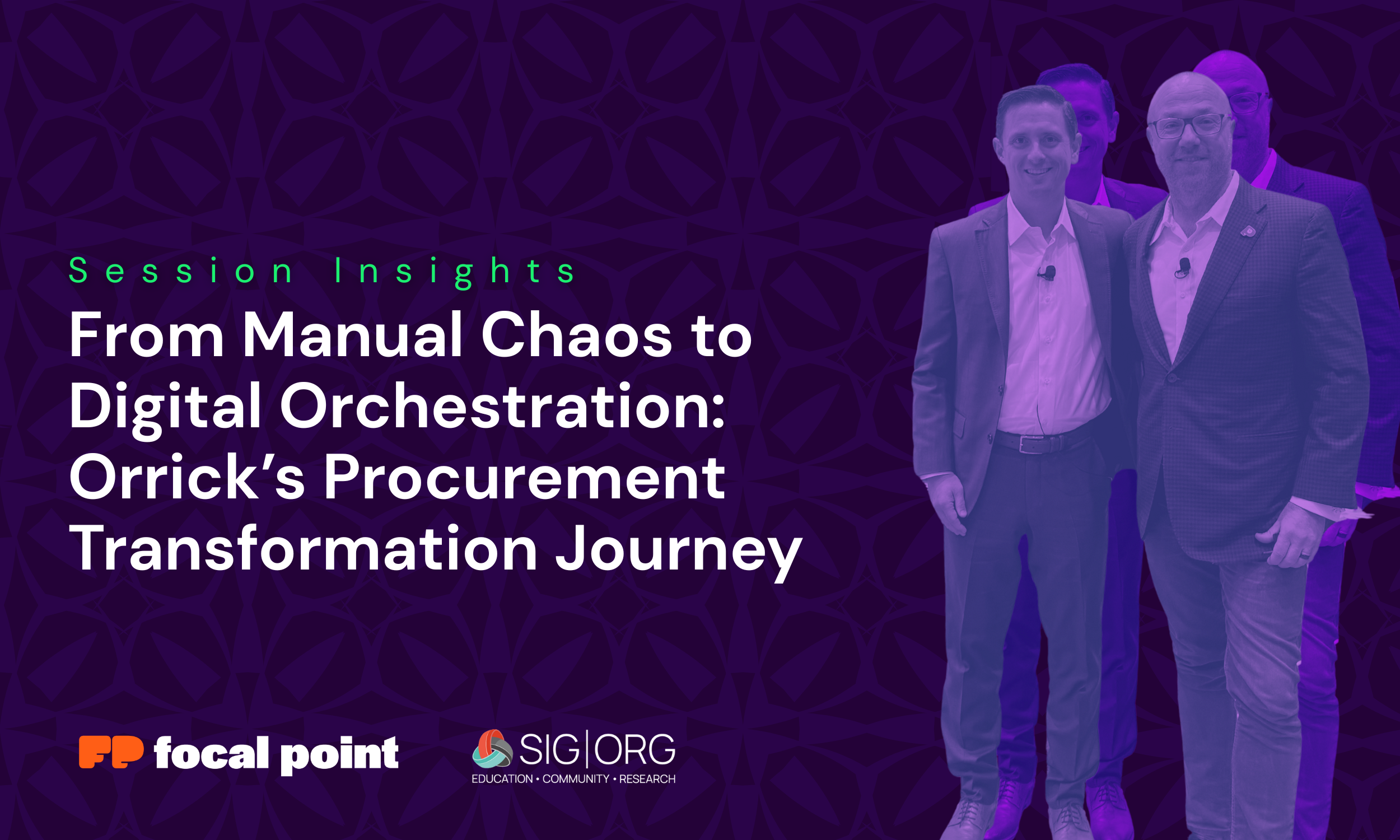This article was originally published in Forbes.
Good branding can be summarized in a few sentences. It tells a story, is uniform across all platforms, is easily understood, and evokes a (hopefully) positive emotion and action amongst the target audience. This is true whether you sell soda or software.
A good brand permeates every vein of the organization from research and development to sales and marketing. Exceptional branding is so seamless, it is nearly undetectable.
Largely, our organization, which provides software for procurement professionals, was up against widespread internal and external misalignment. There was a lack of clarity around how we spoke about our product, and when we surveyed our prospective customers, we found that our branding wasn’t speaking to the right decision-makers. Thus began the rebranding process.
Why is good branding important for a SaaS company?
Truth be told, our company will likely never achieve subliminal brand superiority like Apple or Nike. But the important thing is to understand the value of defining core functions in a way that resonates with customers. For this reason, we spent six months redefining our value proposition and making sure that—to the best of our ability—our messaging resonates both internally and externally. Turns out, there was a lot we didn’t know. If you’re a SaaS founder considering a rebrand, here are four things we found through our process that can help make it successful.
1. Use data to validate your instincts.
It’s important for companies to understand why they’re rebranding, and this should go beyond boredom with an old logo or tagline. A brand runs much deeper than that. As a growth-stage, capital-efficient company, we recognized that we were at a comfortable spot in our development cycle. We have truly zeroed in on our core product and could
Before taking on a rebranding project that will require a significant time investment from the majority of your team, begin by gathering as much data as possible to validate your feeling that it’s the right time to rebrand. For example, we surveyed our existing customers to get a sense of what they thought was our company’s core offering and then asked the sales team the same. What we found was, again, misalignment in how we are answering questions as simple as, “What do you do?”
We’re seeing efforts by companies to redefine who they are across the industry. Forrester reported a significant uptick in B2B rebrands in 2021 and 2022—unsurprising, given how the business landscape changed during the pandemic. But despite being confidently aligned on the necessity of a rebrand, we still had the entire process ahead of us.
2. Establish the “why.”
On the surface, a rebrand is a largely visual endeavor. But for the strongest ROI, it’s important to tie your rebrand to product improvement.
In our case, our new brand needed to differentiate us from our competitors (like all good brands do). But more than that, we needed language to explain why the new category we were creating was worth investing in. Internal alignment and an ability to articulate our core offering were central to our success.
Your brand should be equally compelling and informative. As an example, this might entail establishing your team as innovators while simultaneously using new language for long-standing procurement operations. Your audience doesn’t know what they don’t know, but a brand that is compelling and educational attracts customers and helps them understand why they need something they have never heard of.
3. Align your internal teams.
A significant part of any rebranding effort means getting all of your teams on the same page. Committing to using consistent language and collaborating in a way that preserves that language can help advance your overall rebranding goals.
Pre-launch, ensure you train both your teams and external partners. For us, this included our PR team, social media managers, board and newly sourced creative agency, though this will differ depending on the organization.
Our training covered the new branding and language in a one-day intensive workshop. To maintain successful momentum afterward, consider regularly holding internal coaching sessions to ensure your sales, marketing and executive teams remain aligned as your brand grows.
4. Define success.
SaaS companies and founders live and breathe metrics—the cost of customer acquisition, customer churn, revenue churn, customer lifetime value and more. These types of financial metrics are the lifeblood of any SaaS P&L and are vital for success. While a rebrand may seem like a “soft” initiative, founders need to be able to measure the success of a rebrand quantitatively and qualitatively.
Eager for success similar to that of Monday.com (formerly daPulse) which went on to raise $50 million in series C funding following their 2017 rebrand, we were steadfast in tying our rebrand to product improvement. We wanted our new site and logo to look good, but more importantly, we wanted our platform to be more intuitive and fit to our evolving customer needs.
A/B test your new look to figure out what messaging is resonating with prospective and existing customers and collect as much data as possible. We used an independent business development representative to identify customers’ most pressing needs. With their feedback in mind, you can better refine website copy, design, sales language and tagline to ensure that the refreshed messaging isn’t getting buried beneath a flashy aesthetic change.
Before launch, make sure everyone is aligned from top to bottom and that your product supports the claims being made—even if this creates setbacks. To mitigate glitches, ensure low latency and guarantee the product was completely functional, we pushed back the launch several times—a difficult but necessary decision that protected our new brand. Though this may seem trivial, avoiding the frustration of existing or new customers is critical.
Looking Back (And Ahead)
Rebranding is not solely a cosmetic endeavor but a commitment to future success. Like flipping a house, shortcuts and DIYs can produce a beautiful result, but a house that’s not functional retains little market value in the long run. I encourage every growing SaaS company considering a rebrand to dig deep into the heart of the brand—that is where the real work happens.



